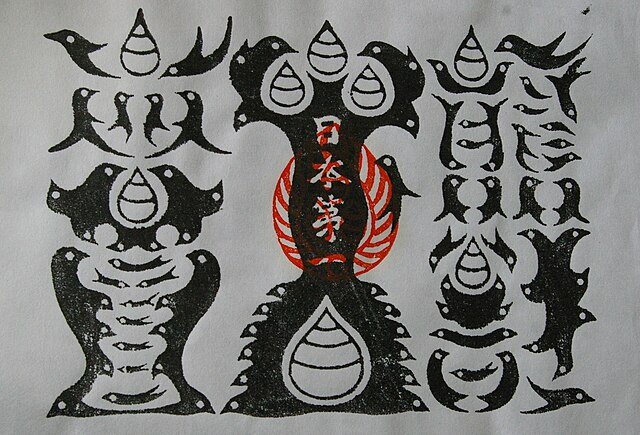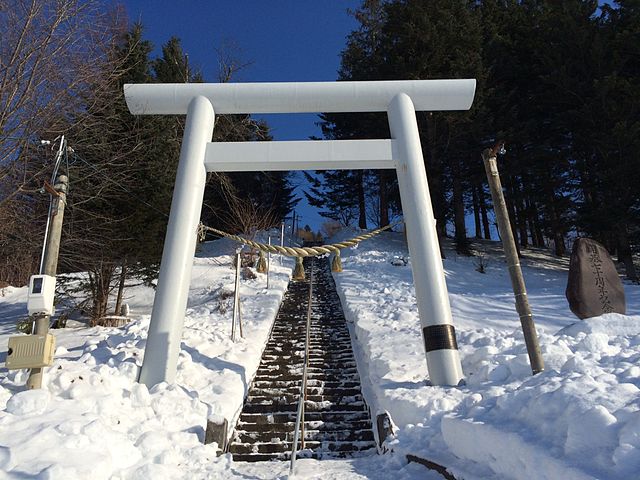In Shinto and Buddhism in Japan, an ofuda is a talisman made out of various materials such as paper, wood, cloth or metal. Ofuda are commonly found in both Shinto shrines and Buddhist temples and are considered to be imbued with the power of the deities or Buddhist figures revered therein. Such amulets are also called gofu (護符).
The Jingū taima (神宮大麻), an ofuda (shinsatsu) issued by the Grand Shrines of Ise (center) flanked by the ofuda of Yasaka Shrine (right) and Fushimi Inari-taisha (left)
Ofuda (gofu) distributed in Kinkakuji (left) and Ginkakuji (right) in Kyoto. These also serve as admission tickets to the temples.
A goōfu (牛王符) from Kumano Hongū Taisha in Wakayama Prefecture
Different types of Jingū Taima (upper row) and other talismans distributed in the Inner Shrine (Naikū) of Ise. From left: Kaikō taima (海幸大麻) (a kind of kifuda for luck in fishing), kenharai (剣祓), kakuharai (角祓), and daikakuharai (大角祓) (a larger version of kakuharai).
Shinto is a religion originating from Japan. Classified as an East Asian religion by scholars of religion, its practitioners often regard it as Japan's indigenous religion and as a nature religion. Scholars sometimes call its practitioners Shintoists, although adherents rarely use that term themselves. There is no central authority in control of Shinto, with much diversity of belief and practice evident among practitioners.
The torii gateway to the Itsukushima Shrine in Hiroshima Prefecture, Japan, one of the most famous examples in the country. Torii mark the entrance to Shinto shrines and are recognizable symbols of the religion.
A torii gateway to the Yobito Shrine (Yobito-jinja) in Abashiri City, Hokkaido
A torii gate at the Takachiho-gawara shrine near Kirishima, Kagoshima Prefecture, which is associated with the mythological tale of Ninigi-no-Mikoto's descent to earth.
An artistic depiction by Utagawa Kuniyoshi of the kami Inari appearing to a man








